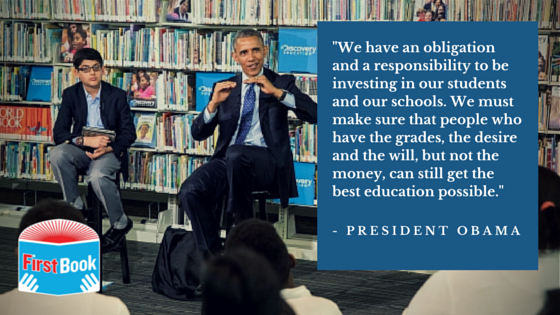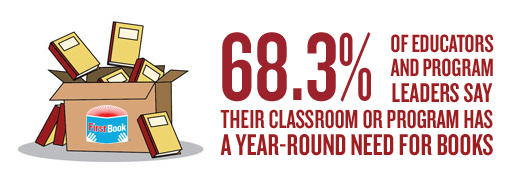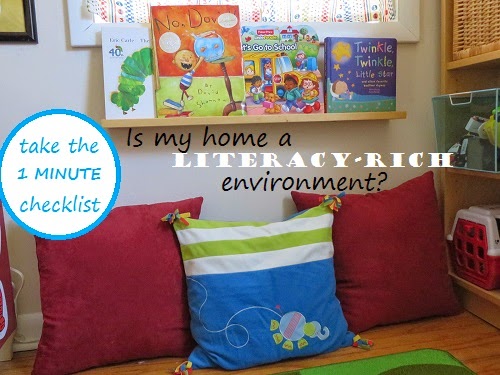I recently found myself facing the dreaded task of packing up my entire classroom. Trying to see this as an opportunity to reduce the number of boxes labeled only with question marks, I sorted through papers and miscellany, recycling and tossing with gusto. Math papers that I never used? Recycled without a second thought. A plastic bag filled with a mixture of sequins? Donated to the art closet. I was slimming down my classroom materials without remorse…until I came to the last section: my classroom library.
My classroom library is, as I believe nearly all libraries are, a thing of beauty. Eighteen categorized sections and counting, displayed in neat baskets or arranged in an orderly fashion on the shelves. But now, as I pictured having to lift and carry all of these boxes out of my classroom, the sheer quantity of books daunted me. Surely, there were some books that I could leave behind or donate.

For some people, the task of sifting through those books may have been as simple as I found paring down my papers to be. But for me, a lifelong saver and hoarder of books, this was a challenge of near-mythic proportions. Almost since I learned how to read, I’ve been a rescuer of books discarded from libraries, a purchaser of those books on the “last chance” shelves. I simply cannot stand the thought of a book floating around unread, unloved, and without a shelf to call home.
In the past, as I’ve tried to pare down my own collection of books, I’ve struggled to discard titles unless I vehemently hate them (a feeling I rarely experience). But I was determined to make a good-faith effort to look through each of my classroom bins with a critical eye.
I sat down on the hard, scratched tile floor in my nearly-bare classroom and started going through my books, bin by bin, looking for outcasts that I could discard. As I sifted through the books in each category, I found books in need of repair, which I set aside to add to my “book hospital” bin, but the “consider discarding” pile remained especially lean a couple hours into the project.
As I sorted, I tried to consider what criteria might help me determine if it was time to toss a book. I was vaguely operating with the assumption that I would consider discarding books that were older and featured dated information, centered around very obscure topics, or were lackluster or unlikely to spark student engagement. But soon I found myself making exceptions to these rules — for classics and especially for books about weird topics, since you never know what book is going to pique the interest of a reluctant reader.
I’m sure you can see where this going. By the end of the day, I had several books to repair with packing tape and a small pile of eleven to discard — mostly books that contained false information (though I kept some of those, too, to show students that knowledge evolves.) I couldn’t bear the thought of a future student saying to me, “Do we have any books in our library about…?” and then thinking of a book that I’d left behind at one point in time.
So when it came time to move everything, I happily heaved all of those boxes of books and transported them across the state line, still contemplating when, if ever, it would feel okay to get rid of books.

The post Trimming down a classroom library appeared first on The Horn Book.

At the heart of First Book’s mission to help children in need read, learn and succeed is the distribution of educational content. Breaking down the barriers to accessing books and other information can lift the kids we serve and their communities out of poverty and into bright futures.
When President Obama announced the ConnectED Initiative two years ago, he set an ambitious goal to provide 99 percent of American students with access to next-generation broadband internet in their classrooms and libraries by 2018. And this past April, the President followed up on this commitment with the Open eBook Initiative, a program aimed at creating a world-class digital library and making it available to students aged 4-18 from low-income families.
First Book is proud to partner with the White House to support this bold program that will bring all of America’s classrooms into the digital age. Specifically, First Book will help ensure the eBooks library reaches students in low-income families.
Many of the 180,000 schools and educational programs we serve are already working to transform their districts’ teaching and learning in the digital age. We’re excited to support Open eBooks to reinforce their efforts and take strides to ensure all children have a world of knowledge within reach.
The post How First Book & The White House are Transforming Education Today appeared first on First Book Blog.


Summer is on its way. But that doesn’t mean teachers, program leaders and the kids they serve don’t need books.
In fact, access to books is important year-round and this is especially true in the summer. When school is in, students have access to books and resources provided by their schools. But when school lets out, kids in need don’t have the same access they had at school. They may not have books at home. Their community library may be hard to access. And this stands as a barrier to their ability to succeed in school and in life.
Whether it’s the beginning of a summer program, the end of the school year or time to go back to school, one thing is clear – educators and program leaders need books for their students!
Do you work with kids in need and need books? Do you know someone who does? Sign up with First Book to access books year-round.
Source: First Book Nurturing Survey, September 2014-April 2015. N=1386
The post A Year-Round Need for Books appeared first on First Book Blog.

A “literacy-rich environment” is one that provides children with easy access to interact with a variety of printed and writing materials. These materials may include such things as books, magazines, crayons, paper, signs, pencils, or word labels. Having a literacy-rich home brings your child one step closer to becoming ready to read! Today I'm sharing a quick checklist of features of a literacy-rich environment that can help you to evaluate your own home.

“Children with access to books and to quality reading experiences in their homes have more rapid language & literacy development compared with children without such advantages, and they are more able to enter school ready to learn. And although early childhood educational programs can do much to help children develop strong language and literacy skills, there is little substitute for the power of children’s rich, positive, frequent experiences with books with their homes under the sensitive guidance of a parent.”– quote from Shared Storybook Ready: Building Young Children’s Language & Emergent Literacy Skills by Helen K Ezell & Laura M. Justice.
Complete this quick checklist of features of a literacy-rich environment
to help evaluate your home:
___ My home includes a variety of books that are easily accessible to my children (that is, placed on easy to reach bookshelves, or in bins on the floor, etc).___ My home includes a variety of other printed materials (for example, card games, newspapers, magazines, notes, informative labels).___ My home contains writing tools that are easily accessible to my children (for example, pens, pencils, crayons, markers, paper, journals). ___ There are numbers throughout my home that are in my children’s view (on clocks, thermostats, calculators, calendars, money).___ There are areas in my home designated for reading (for example, a comfy chair with a light or a “book nook”).___ There are areas in my home designated for writing (for example, a playroom with a kid sized table, a desk with paper and pencils, or a night stand with a journal).___ The play spaces in my home promote literacy skills (for example, having a cookbook in a child’s kitchen area, or a notepad and pencil with a doctor’s set).___ My children often see the adults in the home engaged in reading and writing activities (for example, reading a magazine or writing a shopping list).___ We have a specific time set aside for reading and writing activities (for example, writing or drawing in a journal before bed, or reading stories before dinner every night).
How do you measure up?






